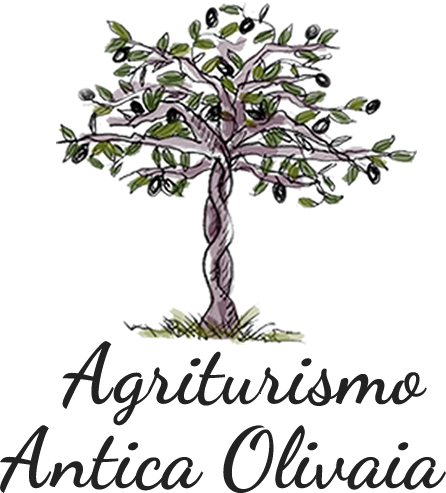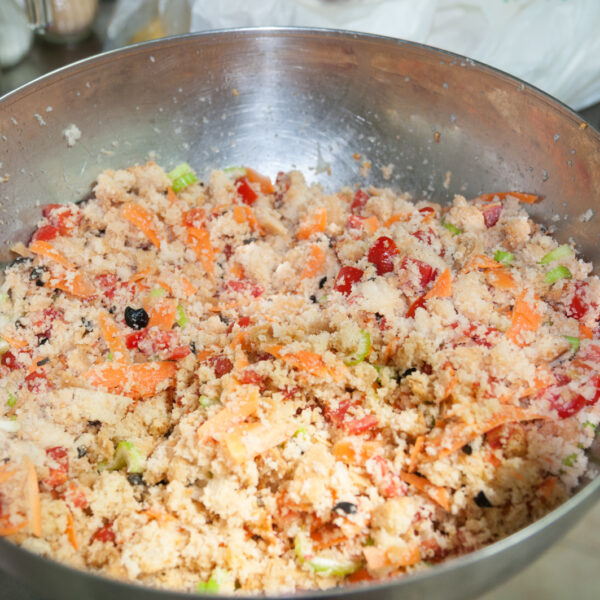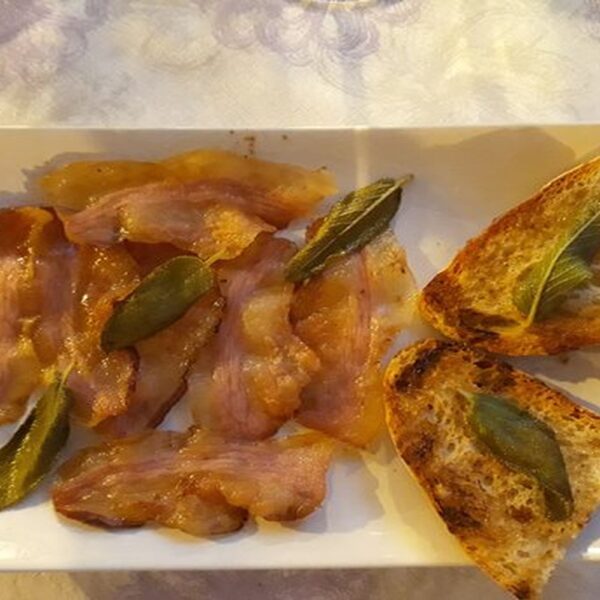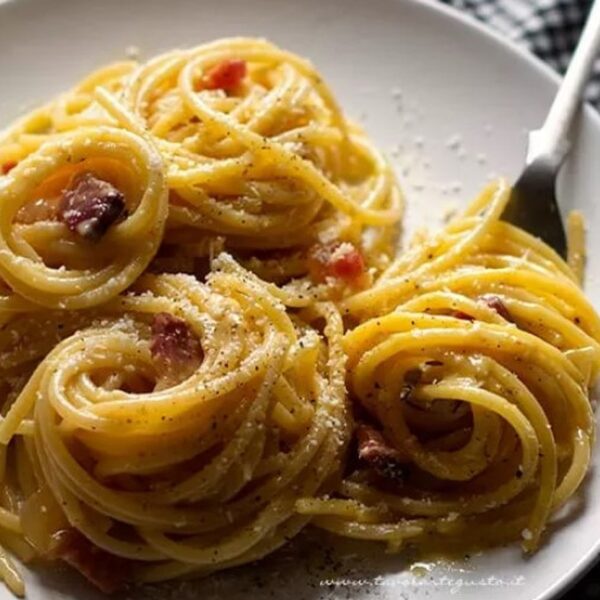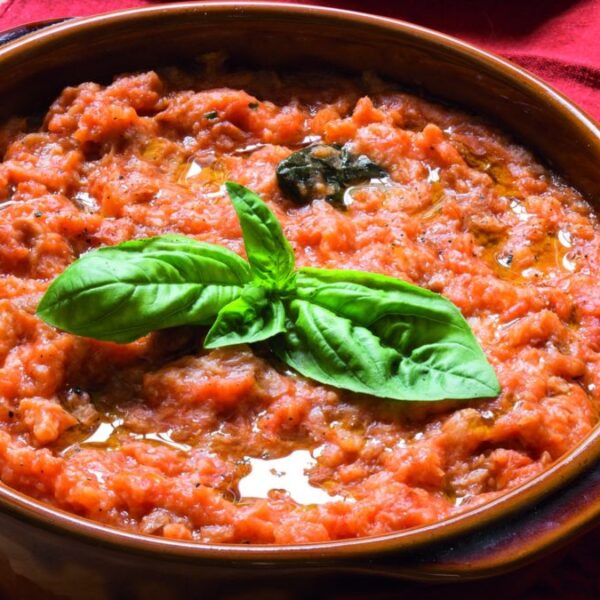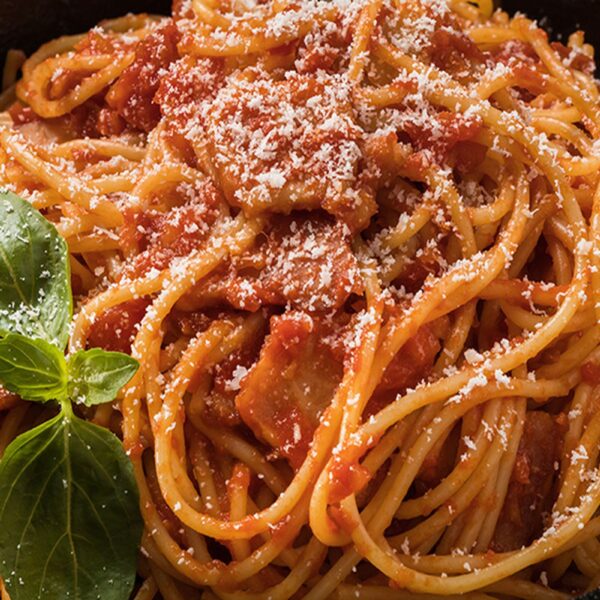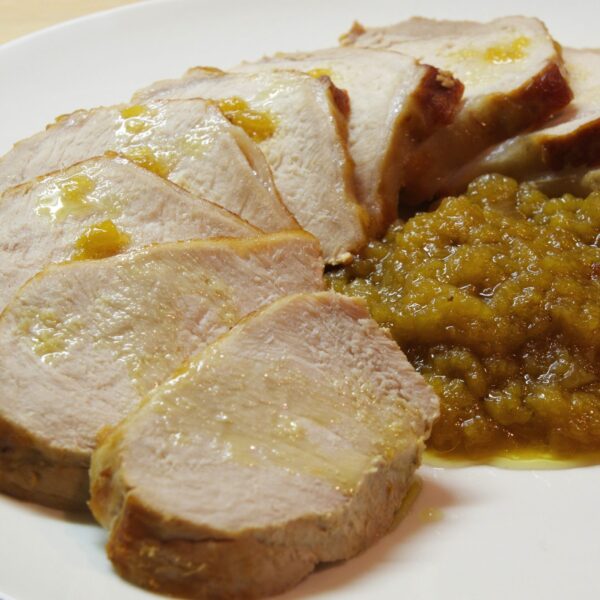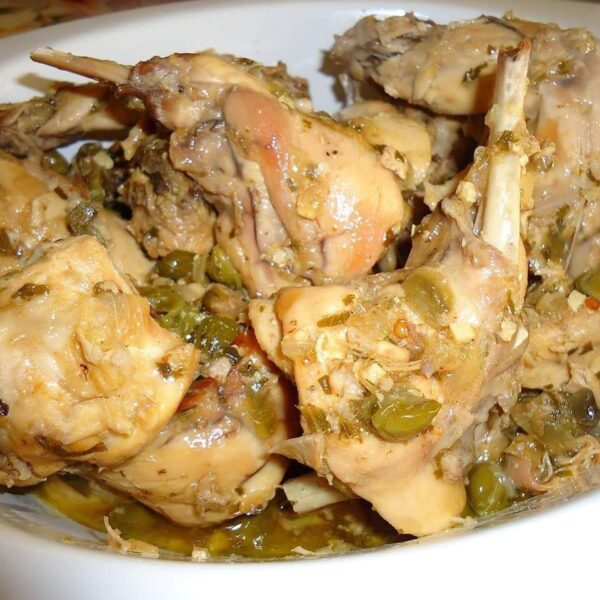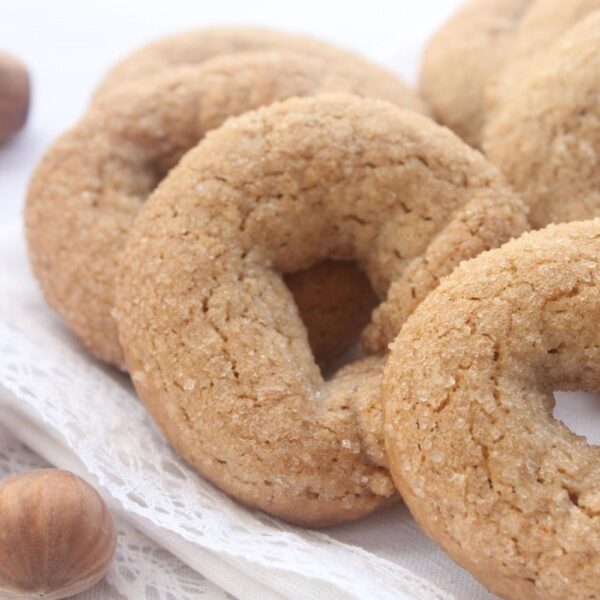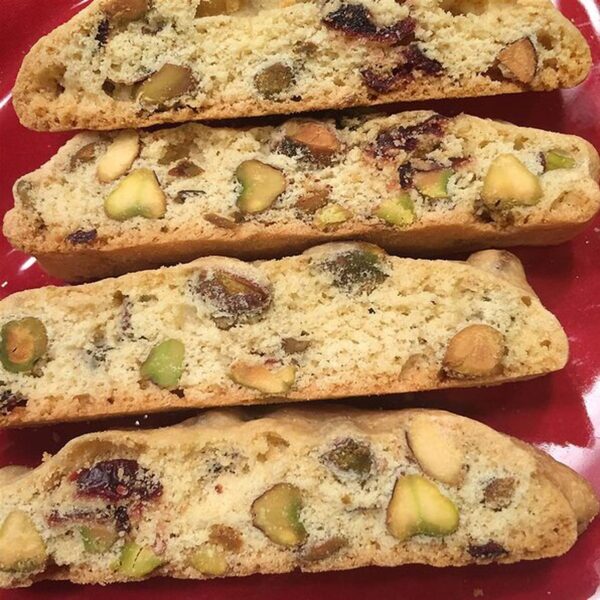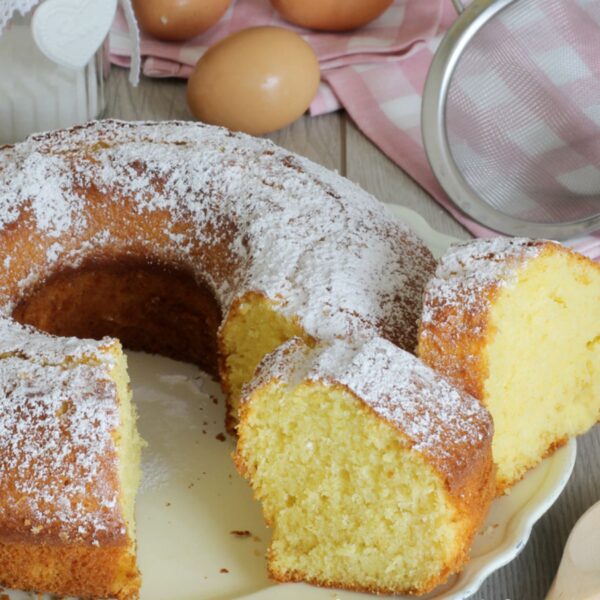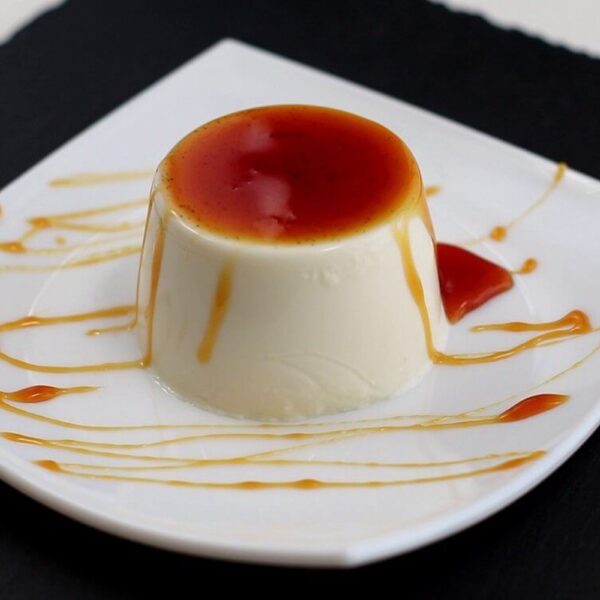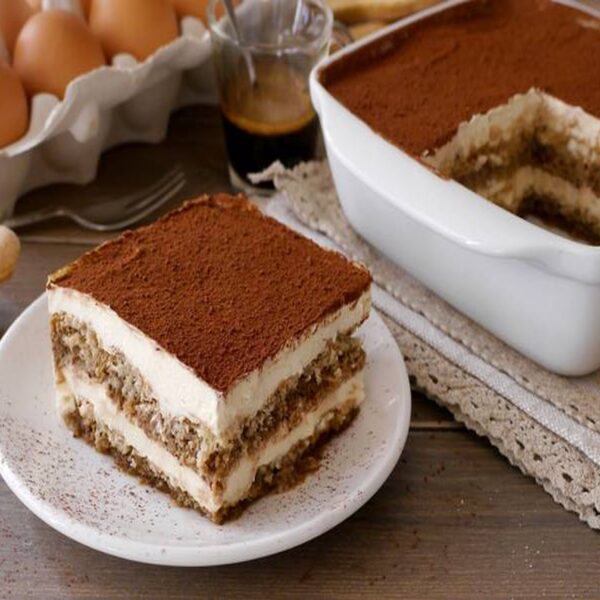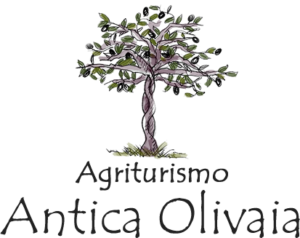For me, cooking and baking evoke sweet memories of warm comfy homes, amazing food scents, steaming ovens, bubbling pots and extraordinary holiday feasts spent together with the entire family – all 30 of them along with lots of arguing in the kitchen. I have always had a deep passion for cooking especially for the art of baking. As a little girl, I used to spending my weekends with my Nonna (grandmother) who loved to bake and then eat her all sweet creations by the end of the day. And I mean immediately out of the oven piping hot. She was, as we say, the epitome of a sweet tooth. So much so that when my mother would come to pick me up from Nonna’s house, she would ask me what I had baked with Nonna. I would very seriously tell her the whole list but when she asked to try one, I would just giggle and tell her they had all been devoured and not one was left! Today, baking brings back so many wonderful memories and scents much like Marcel Proust’s book “A Remembrance of Things Past” and his deliciously smelling madeleines.
My parents also loved to cook using regional recipes coming from both northern and central Italy, which are quite diverse regions in terms of culinary traditions. My mother, who hails from the area of Italy once called Istria (between the Italian & Austro-Hungarian borders and what is modern day Croatia), and my father, who comes from Rome, had two completely different culinary upbringings but both had solutions for any time of the year based on what was available seasonally. On cold snowy days in Chicago my father would come home and say “Polenta is in the air!” (and that happened often in the Windy City!). The smell of my father’s lush tomato sauce stewed with fennel spiced sausages and pork ribs to be eventually poured on that golden colored corn meal is forever imprinted in my taste buds’ memory bank. To this day when it snows, I still say “time for polenta.” My mother would make strudels and spiced cookies, whose perfume permeated the entire house. And the oh sweet smell of sugary cookies and spongy soft chocolate cakes lingers in my culinary memory as well. Most memories are photographic they say but as I write these words I realize that my memories are linked more to smells and tastes rather than to visual ones. It is simply those sensorial emotions linked to food that define the most vivid and happy memories for me.
Marco’s family, on the other hand, lived in Rome and on the nearby seaside so their cuisine and diet was based more on seafood. The men (his father, uncles and the sons) would go out in the early morning and fish all day with a mask, lance, and nets. And a little rowboat. Very primitive but very effective. Marco’s mother had to invent hundreds of way of cooking octopus and squid as that was what was most abundant in those days. Small sized fish like seabass, giltheads and groupers were also caught and grilled. Clams, mussels and other shellfish were a delicacy. So Marco became an expert in cooking fish and to this day some of his best dishes are these marine based recipes.
It is important to understand that “Italian cooking” in the general sense does not truly exist – it is regional. Twenty regions to be exact and within those regions the culinary nuances of each town co-exist as well. What you eat in the southern regions you do not find in the north and vice versa. Umbrian regional cooking is sober and presents simple tastes prepared with expertise and mastery much like the Tuscan way. The simplicity of the dishes is rooted in a cultural history of poverty and agriculture, “cucina povera” (or poor cuisine). For centuries, the difficult conditions of life demanded the use of poor, inexpensive food by the lower classes and the peasants. This is the reason why oil is preferred to lard or butter, and thick bread-based soups are preferred to pasta and why days’ old bread is utilized in most recipes. Nothing is wasted or squandered. The fundamental food in Umbria was and still is, without a doubt, bread; and, it is presented in many shapes and sizes usually unsalted (due to a tax on salt imposed by the Pontificate back in 1540). Cured pork was another staple of this cuisine which when cured lasted throughout the cold winter months, as was game (boar, dove, hare, and venison) that was hunted and then roasted. Tomatoes were also a staple, grown and harvested in the summer and canned for the long winter ahead. However, today, in contradiction to “the poor cuisine” of the old days, Umbrian cuisine includes some of the most expensive food items in the world like black and white truffles, extra virgin olive oil, wild fennel, saffron and porcini mushrooms. How times change…
So when we moved to Umbria (only an hour from where we lived before in Rome), Marco and I adapted once again and learned how to cook like the Umbrians. We discovered that Umbrian cuisine is not as simple as it seems and offers quite complex and diverse tastes. Also, living on the border of three regions, we learned to integrate Tuscan, Roman and Umbrian cooking into our cooking styles borrowing the best from all three regions.
In this section, I am happy to share some of our favorite recipes with you, some of which you will most probably try when staying with us. We love to share our recipes with our guests (no secrets here as cooking is like loving – it must be shared and passed on to many), so if you would like to have other recipes or need advice just drop us a line. I hope you will try some of these recipes and bring a little of Umbria (and us!) into your homes.
Panzanella (Peasant Salad)
Take 2 pieces/person of old stale bread without the crust and wet with water until softened. Place all the softened bread in a big bowl and add finely chopped and diced carrots, onions, celery, tomatoes, peppers and olives. Mix it all with olive oil, salt and pepper and a dash of white wine vinegar. Cover it with plastic film and place in the fridge for an hour at least. Either serve as a salad or buy those little molds/aluminum circles and make circular forms out of the salad.
Baffo all’Orvietana (Pork cheek on toasted bread)
- 2-3 slices per person of guanciale (pork cheek) cut thin
- 1 slice of bread per person
- Pinch of sage
- Half a glass of white wine vinegar
Pan fry the slices of guanciale and chopped sage and then when browned add the white wine vinegar. Cook until vinegar reduces. Toast thin slices of bread, place the guanciale slices on top, and serve as an appetizer.
Spaghetti alla Carbonara (serves 4)
- 400 grams durum wheat thick spaghetti (100g/person) – Garofalo is our favorite
- 4 yolks of free-range eggs (if possible)
- 1 tablespoon of milk
- 1 splash of white wine
- 160 grams of thickly cut guanciale diced (or pancetta if you cannot find guanciale anywhere)
- A tablespoon of grated parmigiano
- 150 grams of pecorino Romano (black crust)
In a large bowl separate the yolks from the albumen (which you can throw out or use for a frittata/omelet later). Beat the egg yolks, milk and the grated parmesan cheese by hand and put aside.
Put a pot of water up and get it to boil slowly for the pasta. Meanwhile in a pan put the diced guanciale with nothing else and let it cook in its own fat. When it starts to crisp, add a dash of white wine and as soon as it has evaporated add a bit of olive oil and let the guanciale finish cooking; turn the heat off.
Grate the pecorino Romano cheese. When the water boils, put a fistful of salt in and throw the spaghetti in uniformly. Mix until all the pasta sinks in. Follow the pasta cooking times on the package but drain it a minute earlier then asked (taste test so you’re sure it’s “al dente” just firm never mushy!). Before you drain it, put aside some of the boiling starchy pasta water in a cup (may be needed later).
Turn on the heat under the guanciale again, drain the pasta and put it in the pan with the guanciale, and stir the pasta with the guanciale for about a minute until it gets glossy. If the pasta looks dry add a dash of the starchy water and mix well. Turn the heat off and throw the pasta in the egg mixture bowl (never vice versa) and mix it quickly otherwise the egg will cook like an omelet! It should now form that nice yellow cream around the pasta. Serve the portions and sprinkle the pecorino cheese on top and a bit of black pepper if you like.
Pappa al Pomodoro (serves 6)
- 500g. ripe cherry tomatoes (if you don’t have these it works well with only the tinned ones below)
- 3 cloves of garlic
- Large bunch of fresh basil leaves and stalks
- Extra virgin olive oil
- Salt and black pepper
- 800g good quality Italian plum tomatoes (tins)
- 500g stale good quality bread (white cottage style loaf not cheap factory toast bread)
Prick the cherry tomatoes and toss them with one sliced clove of garlic and a quarter of the basil leaves. Drizzle with EVO oil, sprinkle with salt and pepper, put them in a roasting tray and cook in the oven at 180C for about 20minutes.
Heat a nice bit of olive oil in a large pot and add the remaining garlic and the chopped basil stalks. Stir around and gently fry for a minute until softened. Add your tinned tomatoes then fill the tin with water and add that. Break up the tomatoes with a spoon bring to a boil and simmer for 15 minutes.
Tear the bread up into thumb-sized chunks and add them to the pot. Mix well and season to taste. Tear in the basil leaves and let the soup sit on a low heat for 10 minutes. By this time, your roasted tomatoes will be done with juice bursting out of their skins so remove them from the tray remembering to scrape all the sticky bits from the bottom. Put them into the soup with all the juices, basil and oil from the tray.
Give the soup a good stir…you want a thick silky porridge texture so feel free to adjust with a little water. Remove from heat and add 6-7 tablespoons of EVO oil. Divide between bowls and serve with a little extra basil torn over the top.
Spaghetti all’Amatriciana (serves 4 people)
-
400g spaghetti or bucatini
-
200g of thickly cut guanciale (pork cheek)
-
1 liter of sieved tomatoes (passata with San Marzano tomatoes is best) or circa 2 tins of peeled tomatoes
-
Half glass of white wine
-
Chili pepper
Cut the guanciale into thin strips and cook In a wide pan (no oil). When it’s browned, add a half glass of white wine and cook until it evaporates. Add the tomatoes and one dried chili pepper. Cook until sauce thickens. Boil the spaghetti as per package instructions. Throw the strained spaghetti into the tomato sauce pan, turn up the heat and mix well. If sauce is too dry add a little of the starchy water from the pasta’s cooking water. Serve with pecorino romano cheese (black skin)
Pork Loin Roast and Green Apple Sauce
For the roast:
- 700 gr pork loin
- 1 onion
- Vegetable broth
- ½ glass of apple vinegar
- Flour
- EV Olive oil
- Bay leaves, sage, rosemary and salt & pepper
For the green apple sauce:
- 1 green apple (leave peels on but core them)
- 1 tablespoon olive oil
- 1/2 glass of water
- 1 bay leaf
- ½ lemon (juice)
- 1 tsp sugar
- Pinch of salt and pepper
Flour the pork loin and sear in a wide pan that has been oiled lightly 2-3 minutes on each side (in this way you lock in all the juices and flavors by cooking it quickly on the outside). Add the onion cut into big slices, 3 spoons of olive oil, all the herbs, ½ glass of apple vinegar and 2 ladles of broth. Salt and pepper the roast, cover and cook slowly for about 45 minutes taking care to rotate the roast every 15 minutes and bathing it in broth every so often when it looks dry. Poke it with a fork and if clear juices come out then it is ready (if it is pink give it another 5-10 mins).
Take it out of the pan and place on a flat dish and cover with foil; let it rest for 20 minutes. In the meantime, strain the juices (throw out the veggies) and keep warm. For the applesauce, cook the apples slices in a small pan with all the ingredients for 10-15 minutes or until apples are soft. Remove the bay leaves and blend the rest with a hand blender. Serve the pork roast sliced with the gravy and applesauce on the side. (N.B. If the pork roast is still a bit pink, place the pork slices in a pan with some of the gravy and quickly finish cooking.)
Coniglio alla Cacciatora (Rabbit Hunter style for 4 people)
- 1.5 kg or 1 whole free-range rabbit (or you can replace this with a free-range chicken or guinea fowl/hen)
- 5-10 cherry tomatoes
- Fresh sage, rosemary and garlic
- Fresh or dried chilies
- Handful of black pitted olives
- 1 glass of white wine vinegar
- Olive oil to cover the pan thinly
If it is a mass production rabbit, then it needs to be purged heating it whole in a pan with nothing else on low heat for 4 – 5 minutes (to get the water content and smell out of the meat, and then throw that water out). If it is a free-range rabbit or other meat from a local organic farm then skip this step. Remember free-range meat takes longer to cook, as the meat is more solid and free of fat.
Cut the rabbit into small pieces (12-14 pieces) and brown the pieces on both sides in a pan with some olive oil, chili and garlic. Add all the herbs cut into small pieces and the black olives and cook for 5-10 minutes. Then add the cherry tomatoes cut in half and some salt. Cover the pan and cook until the tomatoes melt a bit and create some juicy sauce with the olive oil. Add the glass of white wine vinegar, cover and let the vinegar absorb into the sauce. When the vinegar has evaporated a bit and the smell is weaker, it is ready to go. Make sure rabbit pieces are nicely browned.
Ciambelline al Vino Rosso (Red Wine Biscuits)
- 250g plain flour ‘00’
- 80grams sugar
- 1 tsp anise seeds
- 100grams of Antica Olivaia’s extra virgin olive oil
- 100 grams of dry red wine
- 4 tbsp of raw sugar (demerara or white)
Line oven tray with no stick baking paper and pre heat oven at 160C or 310 F. Prepare dough by sifting flour into a bowl and mix through sugar and aniseeds. Add olive oil and red wine using a spatula to combine the ingredients well. Work into a dough with one hand until all the flour is incorporated. Add more flour if mixture is too oily. Sprinkle raw sugar onto a flat surface. Form the biscuits by pinching off small pieces of dough (about a teaspoon worth) and hand roll the dough into sticks of 1cm in thickness and length of 8 cm. Form into a ring making sure to join together both ends by crossing over. Press one of the sides onto the raw sugar so it sticks. Place sugar side up onto the oven tray leaving about 1 cm in between each cookie. Bake for about 20 minutes or until golden in color. Remove from oven and allow to cool on tray. Store in an airtight container for up to 10 days (if they last that long). Great for dipping in an espresso or in sweet Passito (or any after-dinner sweet liqueur).
Biscotti Pistacchi e Frutti Rossi (Pistacchio and Red Berry Cookies)
- 1 cup white sugar
- 2 eggs
- 1 2/3 cup plain flour, sifted
- 1 tsp baking powder, sifted
- 1 cup pistachio kernels (shelled)
- ½ cup chopped dried berry mix (use cranberries, goji berries, raisins)
Preheat oven to 180C and grease 2 baking trays. Line with baking paper. Place sugar and eggs in a large bowl. Whisk to combine. Add flour, baking powder, pistachios and berry mixture. Stir to combine. Knead dough on a lightly floured surface until smooth. Divide dough in half. Shape each half into a 30cm log. Place on prepared trays and flatten slightly. Bake for 30-35 minutes or until golden brown. Cool on trays for 20 minutes. Reduce oven temperature to 140C. Using a serrated knife slice logs diagonally into 5mm thick slices. Place slices in a single layer on the baking paper lined trays. Bake for 20 minutes turning over halfway or until dry and crisp. Stand for 5 minutes and transfer to a wire rack to cool.
Ciambellone (Breakfast Pound Cake in the Shape of a Ring)
**Makes #1 30 cm cake
- 15 eggs
- 1 kilo sugar
- 1 pinch of salt
- ½ liter sunflower oil or other vegetable oil
- ½ liter milk
- 1.1 kilo flour 00
- 45 gr. baking powder
- 1 teaspoon of vanilla extract
- Lemon rind of 1 lemon
Mix the eggs and sugar together with an electric mixer and a pinch of salt. Incorporate the oil, milk and flour with the mixer (flour goes in last). Add the lemon rinds, vanilla extract and lastly the baking powder. Mix well. Final mixture will be quite liquidy. Then pour in a buttered & floured round 30cm baking pan with a hole in the middle (or a 30cm spring form pan with hole in middle). Please note this recipe makes two 30cm cakes therefore divide recipe ingredients in two for 1 cake (for the eggs use 7 eggs + 1 yolk). Bake at 180C for 50-60 minutes (depending on oven). Wait for it to cool then flip over and extract.
Panna Cotta (makes 7 ramekins)
- ½ liter of fresh double cream
- 100grams sugar
- 100ml milk
- 10grams gelatin
- 1 vanilla stick or1 tsp vanilla extract
Put the gelatin sheets in cold water (or if gelatin powder is used then dissolve in some cold water). Warm the milk in a small pot; do not boil. Take off the stove and put the gelatin sheets (water wrung out first) into the milk (or add the gelatin powder mixture) and mix well until dissolved. In another pot pour the double cream, sugar and vanilla stick/extract and slowly heat (low flame) always mixing and bring to a boil. Take off the stove immediately and pour the milk and gelatin mixture into the cream and mix well. Either use a loaf tin or individual ramekins and fill them with the mixture. Cool quickly in a cool water bath (fill up the sink slowly without submerging them) and then once cooled place in the fridge so they set for a couple of hours. If you use the tin then unmold (line it with plastic film as it will be easier to wedge out) or serve in the ramekins. Either make a wild berry coulis or a salty caramel sauce for the topping or drizzle liquid chocolate on top to complete.
Tiramisù
- 5 very fresh farm eggs (the 5 yolks + 5 whites need to be separated)
- 4 tablespoons white sugar
- 500 grams mascarpone
- 1 package of Savoiardi cookies (400g)
- 6 espresso cups (unsugared) + 2 tbsp of milk
- Cocoa powder (bitter)
- ¼ glass of marsala (I use rum or whiskey)
Beat the 5 yolks with an electric beater along with 4 tablespoons of sugar in a medium sized bowl. Add the mascarpone and marsala (or rum) and mix well by hand (no beater) using a wooden spoon. Beat the egg whites until they peak and are stiff and then slowly add to the mascarpone mixture. Blend in slowly using the wooden spoon mixing from bottom to top in order to incorporate as much air into the mixture as possible and leave the whites fluffy. Mix until you no longer see the whites. Make the espresso (or other similar coffee) and pour into a flat platter to cool. Add some milk and mix. Dip the Savoiardi cookies quickly into the coffee 2 seconds on each side (or until you see the coffee slightly absorb into the cookie itself; do not overly wet the cookies otherwise you will get mush). Do this one by one and place into a glass or plastic Tupperware container that is rectangular (9×2). You can also use a rectangular spring form pan; when you release it you will see all the luscious layers. For the first layer place each cookie horizontally one by one into the container/pan and make sure the entire layer is covered with cookies (break off some cookies to fit at the end if need be). Then add a layer of the mascarpone and egg cream and sprinkle chocolate powder lightly over the layer. Then do the second layer by placing the coffee imbued cookies on top in the opposite way of the first layer (vertically). Repeat the cream layer and cover with chocolate on top so you do not see the yellow cream any longer. Cover with a lid or aluminum foil and place in fridge for at least 4-5 hours. Serve in squares.
